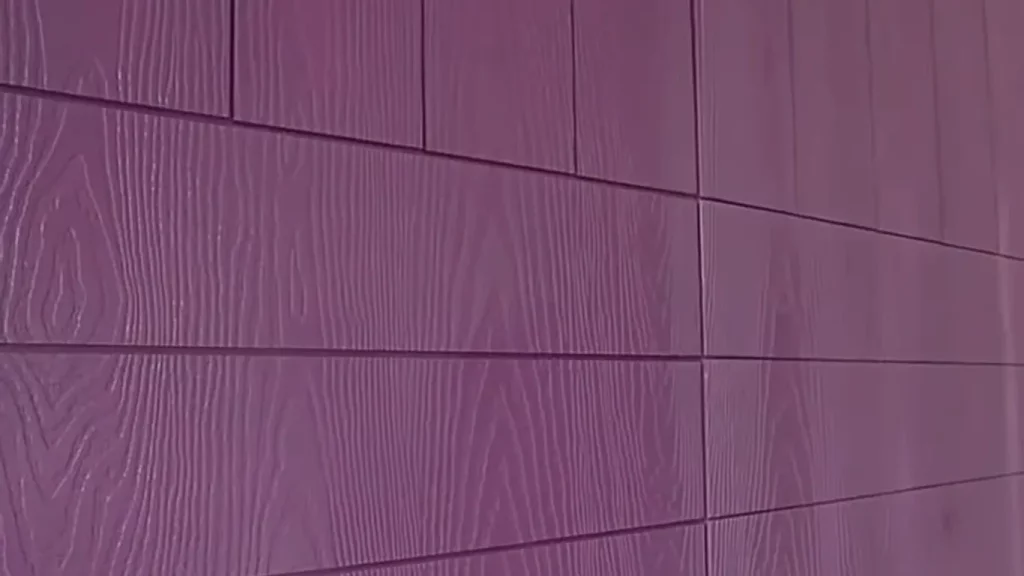Painting your wall panels can be therapeutic and fun, but what if you could paint something that is not only beautiful but also waterproof? Making it less of a functional wall cover to more of a personal statement?
Waterproof wall panels are a great way to add an extra layer of protection and insulation to your home. Not only do they repel water, but they also add aesthetic appeal and help regulate temperature. This makes them ideal for bathrooms, kitchens, laundry rooms, and basements, areas that are prone to moisture or water damage. What if you want to add a personal touch to your panels?

So, can you paint waterproof wall panels? In this blog post, we will exactly answer your very relevant question and also include little tidbits of information so that you can take your home decoration to the next level.
Can You Paint Waterproof Wall Panels: Factual Answer
Waterproof wall panels are an excellent choice for bathrooms and other wet areas of the home as they provide a water-resistant seal that helps prevent mold, mildew, and other forms of water damage. But how about adding some color to your waterproof wall panels? Is it possible to paint them? The short answer is yes, you can paint waterproof wall panels.
Painting waterproof wall panels can provide an easy and economical way to transform your living space with a splash of extra personality without the worry of potential water damage. Technology and materials have made it possible to paint special waterproof coatings that provide durability over time while also bringing in a touch of style.
The Benefits of Painting Waterproof Wall Panels:
1. Adds Visual Appeal:
Painting your waterproof wall panels is a great way to customize their look and make them fit in with the overall design theme of your home. You can choose from a variety of colors, patterns, and textures when painting waterproof wall panels, allowing you to create a unique style all your own.
Plus, by painting waterproof wall panels, you can easily give any room in your house a quick and easy facelift without having to do too much work or spend too much money.
2. Increases Durability:
Another benefit of painting waterproof wall panels is that it increases their durability. The paint helps protect the panels from scratches and other forms of wear and tear over time, ensuring that they last longer than if they were left unpainted.
Aside from that, painted waterproof wall panels are less likely to fade or discolor due to exposure to sunlight or other elements. This means that you won’t need to worry about replacing them as often as you would if they weren’t painted—saving you both time and money in the long run.
3. The Paint Seals Out Moisture:
Lastly, if you paint over waterproof wall panels, the paint acts as an additional layer of defense against moisture intrusion into your home. This is because the paint seals out moisture better than bare walls do—which makes it ideal for areas where moisture levels tend to be high (such as bathrooms).
In addition to this extra layer of protection against water damage, painting waterproof wall panels also help reduce energy costs by keeping heat trapped inside during colder months and blocking out heat during hot summer days.
4. Easy Maintenance:
Another major benefit of using waterproof wall panels is that they are easy to maintain. Since the panels are made from durable materials, all you have to do is wipe them down with a damp cloth every once in a while to keep them looking like new. This makes them ideal for busy households or businesses where time for cleaning is limited.
5. Cost Savings:
When you paint waterproof wall panels, it can help reduce your energy costs over time because it provides additional insulation between the inside and outside environment of your building. This can lead to lower heating and cooling bills throughout the year, resulting in cost savings for you over time.
Preparations Before Painting Waterproof Wall Panels
There are some important considerations you should keep in mind before painting waterproof wall panels.
1) Clean Your Panels First:
Before you start painting your waterproof wall panels, it’s important that you clean them first. This ensures that the surface is free of dirt and debris, which can affect the paint job. Use mild soap and water to clean each panel before beginning.
2) Use the Right Paint and Primer:
When painting waterproof wall panels, it’s important to use the right type of paint and primer. A good rule of thumb is to use a high-quality latex acrylic or epoxy enamel paint, as these types of paints will bond better with the material and create a more durable finish. For extra protection, make sure that you apply a coat of primer beforehand; this will help the paint adhere better and last longer.
3) Prepare the Surface:
Before painting your waterproof wall panel, it’s important to prepare the surface properly. Start by carefully cleaning the area with soap and water; then use sandpaper or steel wool to scuff up any glossy areas on the surface lightly. This will help ensure that the paint adheres properly when applied.
4) Apply Several Coats of Paint:
Once you’ve prepared the surface, it’s time to start painting! Make sure that you apply several thin coats of paint rather than one thick layer; this will help ensure that your finished product looks even and professional. Also, make sure that each coat has dried completely before applying another one; otherwise, you could end up with an uneven finish or bubbling/peeling paint over time.

5) Consider Adding A Sealant:
Sealing your painted waterproof wall panels with an additional layer of sealant can provide extra protection from moisture damage down the line. Look for sealants specifically made for protecting walls against water damage and apply them once all coats of paint have fully dried onto the panel surfaces.
Can You Paint Directly Over the Bathroom Paneling?
Painting directly over the bathroom paneling can certainly be done, but it is a tricky job that requires some preparation. Experts recommend using mold-inhibiting paints for this purpose.
But before painting, make sure to repair any damaged areas in the paneling, cleaning off stains or mildew and filling in any gaps or cracks with spackle.
Then sand down the panels to provide a smooth surface for good adhesion. You may need an oil-based primer before applying your chosen paint to make sure it fully sticks; there are special primers made specifically for glossy surfaces like these that you should use if possible.
Keep an eye out for any imperfections or brush strokes while working, and ensure the paint is properly cured to avoid any mildew spots cropping up during your bathroom’s damp environment. With some careful planning, though, even those outdated sheets of paneling can become fresh and appealing once again.
Do PVC Wall Panels Need to be Sanded Before Painting?
PVC wall panels can often be the perfect solution to interior design, offering a quick and cost-effective way to liven up walls. But before you start thinking of what fabulous color or pattern you’d like to paint onto the panel, it’s important to know whether you need to sand it first.
The short answer is yes. Any surface needs prepping, and PVC is no different. Sanding PVC allows for better adhesion of paint, as well as creating an even base for painting, and ensures any grooves or imperfections are removed prior to application.
Once you’ve followed the appropriate sanding steps, your PVC paneling should be ready to receive paint. Sanding PVC might seem like an extra bother in comparison with applying fresh panels, but it definitely pays off in terms of the quality and longevity of the finish.
What Kind of Paint will Stick to Waterproof Paneling?
When you’re looking for paint that will stay put on waterproof paneling, the most important quality it should have is elastomeric properties. Elastomeric paint contains rubberlike binders that stretch, which allows it to seal gaps in panels and keep moisture from seeping in behind it.
Acrylic latex or acrylic resin paints are also acceptable choices for waterproof paneling because they contain additional binders and fillers that help repel water when applied correctly. These materials also offer good adhesion, meaning the paint will stick to the surface better.
When choosing a paint for waterproof paneling, be sure to look out for elastomeric, acrylic latex, or acrylic resin paints—these are your best bets for painting projects around the house.
Final Words:
So, it is possible to paint waterproof wall panels, and the possibilities are practically endless. Not only will these panels protect your walls from water damage, but you can also customize them exactly how you want.
Therefore, if you’re looking for a little extra pizzazz in your home decor, paint waterproof wall panels is definitely an option to consider. So put down those mops and roll out the brush strokes. It’s time to be creative and make the rooms of your home reflect you.

S. Pushon is a paint expert, self-taught artist, and currently working as an adviser in the paint industry as a Quality Improvement and Development Assistant.
An artist by heart, he draws remarkable art pieces and as a professional paint industry individual, he seeks the insight and shares with enthusiasts. Read more…

